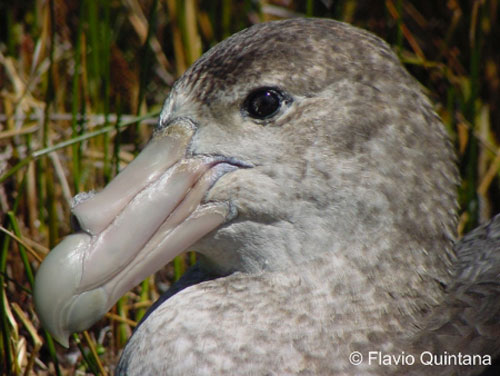Marc Salomon and Jean-Francois Voisin, writing in the Canadian Journal of Zoology, consider that the Southern Giant Petrel Macronectes giganteus has two valid subspecies, separated on mensural grounds.
The paper's abstract follows:
"The Southern Giant Petrel (Macronectes giganteus (Gmelin, 1789); Aves, Procellariiformes), ranging from New Zealand to the Graham Peninsula and Patagonia and also from coastal Antarctica to Gough Island, displays significant geographic variation throughout its range. Six breeding provinces were identified, which show significant interpopulational variation. The formerly proposed subspecies Macronectes giganteus giganteus and Macronectes giganteus solanderi were confirmed. Macronectes giganteus solanderi has smaller homologuous parts than M. g. giganteus. Two of the provinces belong to the subspecies M. g. solanderi. Females are smaller and have shorter bills than males. In M. g. giganteus, outer appendages are longer in the sub-Antarctic than in the Antarctic, which is consistent with Allen's rule. Moreover, an east-to-west cline shows a gradual decrease in body size. Within M. g. solanderi, the Chubut River Estuary (Argentina) and the Falkland Islands form the southern province, and Gough Island the northern province. The birds have shallower bills in Argentina than in the Falklands or Gough, but tarsi are longest in Gough. Macronectes giganteus giganteus is morphologically polymorphic but taxonomically stable, whereas M. g. solanderi, which is biometrically less variable, could undergo taxonomical differentiation. This paper gives arguments for further morphometric and genetic studies on the taxon.

With thanks to Jean-Francois Voisin.
Reference:
Salomon, M. & Voisin, J.-F. 2010. Ecogeographical variation in the Southern Giant Petrel (Macronectes giganteus). Canadian Jounral of Zoology 88: 195-203.
John Cooper, ACAP Information Officer, 12 December 2010

 English
English  Français
Français  Español
Español